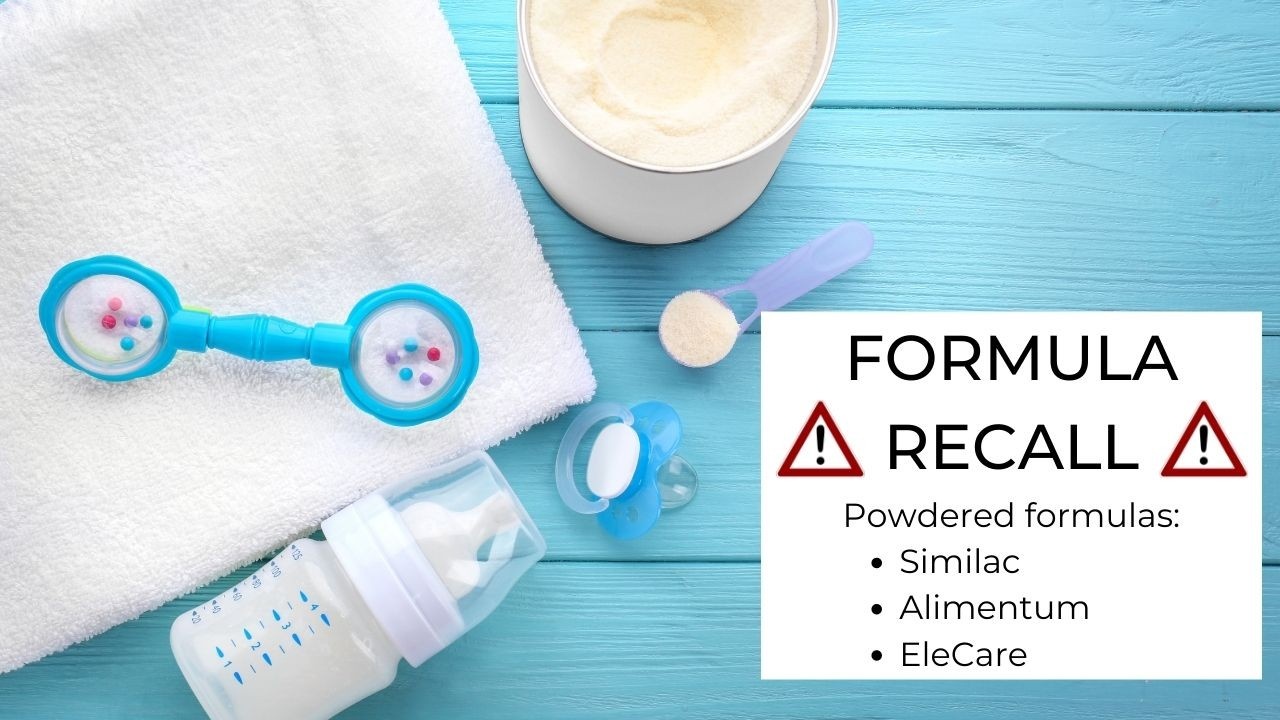Safety First! What Parents Need to Know about Supplementing with Powdered Formula
Mar 20, 2022
So many parents are not fully informed about the safety factors that need to be considered when preparing a bottle made from powdered formula. Many breastfeeding moms are under the assumption that breastfeeding will go fine and formula won’t be necessary, but in light of the recent recall on powdered formula it is important to know the safety facts.
So what do you need to know about recalled powdered formula?
- Powdered formula is not sterile. Despite strict processes, it can become contaminated with bacteria in the manufacturing or transportation process.
- The type of bacteria found in the contaminated powdered formula was Cronobacter. Click HERE to learn more from the CDC.
- It is important to understand that the source of the contamination is bacteria found in the formula and not the source of clean water which is found in developed countries.
- It is important to check the expiration and for recalled lot numbers on any and all cans of powdered formula. Click HERE for Abbott formulas. Discard the formula immediately if you have a can that matches the lot number. Click HERE to check the list.
- If your baby is 3 months or younger, was born prematurely or is immunocompromised, you may consider ready-made formula due to the risk of contamination with powdered formula.
- Preparing powdered formula correctly is a key factor in keeping babies safe!
How to safely prepare powdered formula to kill bacteria?
- Start by washing your hands. Be sure to prepare the bottles on a clean surface using clean utensils.
- Boil the proper amount of water to 158 degrees.
- Using a clean and sanitized bottle, add the exact amount of water to the bottle first and then add the exact amount of formula. Following the directions on the can use the scoop that comes with the formula. When scooping the formula is should be an unpacked and level scoop of powdered formula.
- Shake or quickly move in the shape of an “8” until it is thoroughly mixed and there are no visible clumps of formula. If you are preparing formula in bulk, then you can use a larger pitcher to make bigger quantities. You can then pour the amount you need into each bottle.
- If you are planning to use the prepared formula immediately after preparing, then allow the mixed formula to cool. You may run the bottle under cold water to cool to a safe temperature prior to feeding.
- Prepared formula can be stored in the refrigerator and should be used within 24 hours of mixing. Once the baby has started sucking on the bottle it must be used in 1-2 hours. Babies have bacteria in their mouth and that can potentially get into the bottle of milk.
What types of bottles are good for breastfeeding babies?
There is no one perfect bottle but there are helpful bottle/nipple features to help babies to be able to both breast and bottle feed. Choose a bottle nipple that is slow flow. Wide mouthed bottles encourage a baby to open their mouth wider just like they have to do at the breast. Using glass or plastic is totally your choice. Try to pick a bottle that matches your anatomy as best you can. Check out the mini eBook 10 Tips to Get a Breastfeeding Baby to Take a Bottle.
Again, the number #1 rule is always FEED THE BABY! The goal is to use breastmilk first and formula if needed. Don’t hesitate to reach out should you have any questions or need help with breastfeeding or bottle feeding a breastfed baby!
Kindly,
Stacy Notestine RN, IBCLC
Founder of Baby’s Best Beginning
References:
https://www.cdc.gov/cronobacter/infection-and-infants.html
https://www.similacrecall.com/us/en/product-lookup.html
https://www.cdc.gov/breastfeeding/recommendations/handling_breastmilk.htm
Let’s be (.)(.) Breast Pen Pals!
Stay connected with news and updates!
Get the latest news on upcoming classes and the latest blog posts.
We hate SPAM. We will never sell your information, for any reason.

